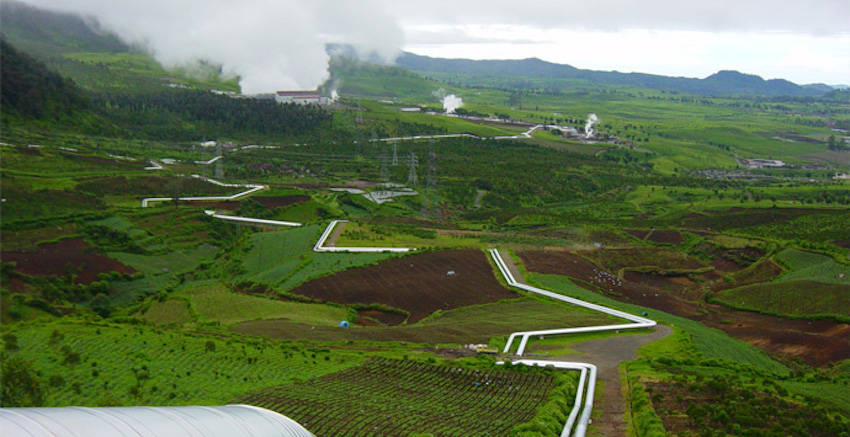Four geothermal areas ready for development in West Java
Environmentalists urge a sustainable and environmentally conscious development of potential projects in geothermal working areas in West Java, Indonesia.
The country of Indonesia has a tremendous geothermal potential which is largely untapped. The two regions with the largest potential are Sumatra and Java. There are a total of seven geothermal plant complexes operating in West Java with a total installed power generation capacity of 1,197 MW. This represents today around 55% of the total geothermal power generation capacity in Indonesia, which stands at 2,178 MW (excluding the unclear 10/ 12 MW small-scale addition by Geo Dipa in Dieng).
There are four additional geothermal working areas (WKP) defined in West Java. Environmental activists who are members of the West Java Geothermal Concerned Community Alliance (AMPIBI) urge the government and investors, to consider sustainable environmental management in the management plan of the four-point areas.
West Java AMPIBI Coordinator Yudi Indratno said there are four WKP in West Java, namely WKP Gunung Papandayan, Tampomas, Ciremai and Halimun Salak. The entire area is very attractive to investors.
“It is certain that the government will soon work on it by involving investors managing geothermal power plants. We remind that WKP management pays attention to sustainable environmental management,” said Yudi.

Picture: Wayang Windu Unit II, West Java, Indonesia (source: Aecom)
Yudi said that the four WKPs were mostly located in conservation forest locations with the status of Nature Reserves under the management of the West Java Natural Resources Conservation Center (BBKSDA), an extension of the Ministry of Environment and Forestry (KLHK) in West Java. It is hoped that the utilization of geothermal energy will not interfere with the function of the area as a conservation forest. In Papandayan, for example, there are seven endangered protected animals in the area.
“Conservation forests that will be used as a place for geothermal utilization, currently the condition of vegetation and biodiversity is quite good,” he said. Yudi said the rate of deforestation and forest degradation in West Java was quite high. This happens because West Java is the province with the largest population, so there are many land conversions. The high rate of deforestation and forest degradation, said Yudi, has disrupted the environmental balance.
The most obvious impact of the disruption of the environmental balance is the number of natural disasters in West Java ranging from floods, landslides and other disasters. Utilization of geothermal energy is not prohibited, but in its utilization it must pay attention to the principles of sustainable environmental management.
“This natural disaster should be a reminder of the disruption of the natural balance due to deforestation and forest degradation. We do not reject the use of geothermal energy in conservation forest areas, but pay attention to environmental management so that the balance is maintained,” he said.
Source: Bisnis.com